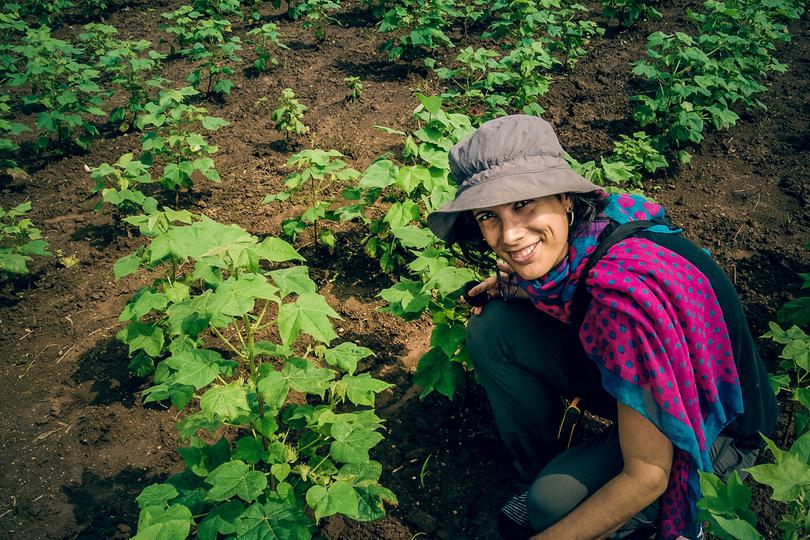
A study of smallholder farmers in Maharashtra state, India, has found that under rain-fed conditions, farmers growing Asiatic cotton can obtain similar revenue and profit to farmers growing genetically modified American cotton (Bt American cotton).
The research, published today in Nature Plants, found that farmers growing Bt American cotton (Gossypium hirsutum) obtained slightly higher yields than farmers growing Asiatic cotton (Gossypium arboreum). However, as farmers growing Bt American cotton spent more on seeds, pesticides and fertilisers, the profits generated by farmers growing Bt American cotton ended up being similar to the profits generated by farmers growing Asiatic cotton.
Asiatic cotton was the cotton traditionally grown in India, however in recent decades the cultivation of American cotton has significantly increased, probably because its fibres are longer than Asiatic cotton fibres, and better suited to existed textiles technology. As American cotton is very sensitive to insect and disease damage, pest-resistant American cotton was introduced to India in 2002. This cotton has been genetically modified to be more resistant to lepidopteran pests, including bollworms. Today Bt American cotton makes up 95% of the cotton grown in India, and Asiatic cotton is estimated to represent less than 3% of the cotton area.
The data collected by lead author Dr Carla Romeu-Dalmau (pictured above), James Martin Fellow at the Oxford Martin School's Biodiversity Institute, from 51 smallholder farmers in Maharashtra state suggests that Asiatic cotton should be considered when farmers are deciding which cotton to grow under rain-fed conditions (the predominant growing conditions in India).
Dr Romeu-Dalmau also assessed to what extent irrigation influenced the performance of Bt American cotton on smallholder farming in Maharashtra. She found that farmers growing Bt American cotton under irrigated conditions obtained higher yields than farmers growing Bt American cotton under rain-fed conditions. However, higher yields did not translate into higher profits as farmers growing Bt American cotton under irrigated conditions spent more to cultivate cotton.
The authors concluded that under rain-fed conditions, the benefits traditionally associated with growing Bt American cotton are not necessarily realised. They recommend that a range of factors - including yields and profits but also irrigation and alternative cotton varieties - should be taken into account when planning strategies to improve cotton farming in India.
- Nature Plants paper: Asiatic cotton can generate similar economic benefits to Bt cotton under rainfed conditions
- Dr Romeu-Dalmau's co-authors were Professor Michael Bonsall, Professor Liam Dolan and Professor Kathy Willis